The sieges of Buda and Vienna in 1529
In the political crisis that followed the death of the Hungarian ruler, King Lajos II (1516-1526), both (legitimate) pretenders to the throne, Ferdinand I (1526-1564) and Szapolyai János, tried to gain supreme power. King János I (1526-1540), who was elected king of Hungary at the Diet of Székesfehérvár, arrived in Buda earlier (on 1 November) but had barely settled in the palace before he was forced to flee in August of the following year as Ferdinand’s heavily overwhelming forces approached.

The Siege of Buda 3-9 September 1529
Ferdinand I of Habsburg, who had expelled King Szapolyai János from Hungary, took possession of Buda in 1527, and appointed his loyal man, Nádasdy Tamás, to lead the city. King Szapolyai János had fled to Poland, but his envoy, Hieronymus Laski, allied himself with Suleiman in early 1528, as Szapolyai had no choice but to seek help from his former enemy. In return, he accepted to be the Sultan’s subject, although he did not have to pay taxes.
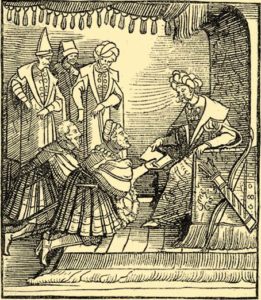
The Sultan promised King János that he would send him help, and Suleiman kept his word and on 10 May 1529 (a rather late date to set out) he marched his army against King Ferdinand’s capital, Vienna. Nine days later, the Sultan arrived in the field of Mohács, where he received King Szapolyai, who paid him homage.
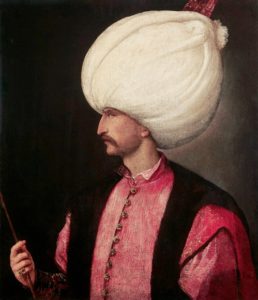
The German-speaking part of the Christian world was shocked when it first experienced the Ottoman threat. Sultan Suleiman had reached Vienna, and now it was not only the distant Hungarian countryside that was burning but also their own country. Unsurprisingly, people at the time hardly noticed that Suleiman had taken Buda Castle on his way to Vienna. For the second time in three years, the Hungarian capital fell into the hands of the Ottoman Sultan Suleiman. This time, however, it took some military action before the defenders opened the gates.

At the same time, Voivode Péter of Moldavia, Suleiman’s vassal, attacked Transylvania and destroyed the Saxon lands loyal to Ferdinand. He defeated the German troops at Brassó / Brasov. Meanwhile, the Ottoman Akindjies and the Sultan’s Serbian troops set out from Sirmium (Szerémség) and wreaked havoc between the Danube and the Tisza.

Ferdinand returned to Vienna at the beginning of 1529, taking most of his mercenaries with him, because they were needed by his brother, V. Charles, the German-Roman emperor. Only 900 defenders remained in Buda, as most of the soldiers fled to Esztergom at the news of the impending Turkish threat. The Habsburg command was primarily concerned with organizing the defense of Vienna, so they could only send a few hundred reinforcements to Buda.

As we said, Suleiman left Constantinople on 10 May 1529. They were stationed at Belgrade when the Hungarian military boats on the Danube attacked the advancing Turkish ships but were badly defeated when the Serbs deserted to the Turks so the Hungarian boats had to flee. The Danube was left completely unprotected as far as Vienna, as Ferdinand was unable, due to lack of funds, to raise a new fleet of ships, nor did he do anything to defend Buda.

Suleiman’s army marched unreasonably slowly through Hungarian territory towards Buda, which was held by the Austrians. In the meantime, Szapolyai returned to the country and retreated to Lippa Castle, from where the Sultan asked him to join him on the Mohács plain. He greeted the padishah with a kiss on the hand and then discussed with him what he had to do. He asked him to return the capital to him if the Sultan captured it. Suleiman promised to do so. Leaving the Turkish camp, Szapolyai marched his army along the left bank of the Danube towards Pest.
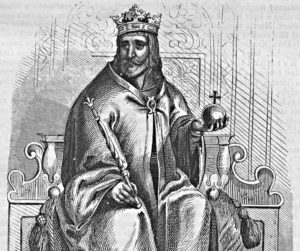
Meanwhile, the castle captain of Buda, Nádasdy urged King Ferdinand for reinforcements. Not only soldiers but also civilians, including the Elector Báthory István, left Buda. The 900-strong guard was finally joined in the last days by a thousand mercenaries under Christoph Pesserer and Johann Taubinger. Also, an army of 5,000 men camped at Magyaróvár. As the unpaid Serbian boaters had joined the enemy, Nádasdy had about 2,000 men and he was busy procuring gunpowder and food and made the guards swear to hold out to the end.
From his camp at Százhalombatta, the Sultan called on the defenders to surrender the castle, but the envoys received a negative reply. In the meantime, Nádasdy attacked the Turkish advance guard with 50 hussars.

On 3 September the Ottoman army reached Buda and made a camp at Kelenföld, while the Grand Vizier approached the Váralja (the Castle’s side) from Óbuda. On the other side, near Pest, Szapolyai camped with his small troops but did not take part in the military action. The Sultan placed his cannons under the castle and his soldiers tried to break through the defenses. By 4 September, 50 mercenaries had escaped from the castle.

The defenders had to evacuate the suburb called St Peter’s quickly, but during the night retreat, only part of the defenders were able to enter the castle due to the heavy Turkish attack. The last days of August began the first major siege of Buda Castle – fought with firearms – in its history. Between 5 and 7 September, the Turks ruined some parts of the walls of the city with heavy cannon fire, and their batteries on Gellért Hill were also effective against the neglected walls. The Stephen Tower fell. However, they failed in totally damaging the walls and the defenders bravely repulsed the repeated attacks. On the morning of 8 September, they successfully fought the Turks, but in the meantime, Pesserer and Taubinger accepted the terms of surrender, although they had plenty of supplies in the castle.

The attackers promised the Christian soldiers that they would be free to leave the castle. The leaders thus called on Nádasdy to surrender, who enraged, tried to remind them of their oath. They then seized the castle captain, threw him into a vaulted room, and surrendered the castle.

The incoming Turks rounded up the population and immediately organized a slave market on the banks of the Danube. Nádasdy was also taken to the great general Ibrahim Pasha. Ibrahim charged him with defending the ancient seat of the Hungarian kings against the legitimate Hungarian king. He then escorted him to the Danube with two Ottoman officers and allegedly tried to drown him. When they reached the shore, Nádasdy jumped into a boat, the janissaries grabbed his clothes, but he slipped out and swam to the other side. In the evening he crossed over to the Pest side of the river and swore allegiance to King Szapolyai János.

According to a contemporary Ottoman source, “…they (the Turks) attacked the castle even before they had breached the walls at one point, and the battle lasted from the morning until the prayer time at noon. Finally, the infidels were exhausted and begged for mercy. They surrendered the castle and were set free.”

However, breaking their word, the Turks slaughtered the surrendering mercenaries and 40 wealthy citizens of the town under the castle. On 14 September, the Sultan summoned King János, to whom he returned Buda and the country. He left thousands of Ottoman soldiers with Bey Koszrev. His protégé, Lodovico Gritti, also stayed with King János as the Porte’s agent.

Nevertheless, the Sultan didn`t keep Buda for himself but ceded it to King Szapolyai. Suleiman went on to attack Vienna. Some historians speculate that Suleiman’s final assault wasn’t necessarily intended to take the city but to cause as much damage as possible and weaken it for a later attack, a tactic he had employed at Buda in 1526.

King János held Buda until he died in 1540, and Nádasdy served him until 1534 when he returned to his original and chosen master, Ferdinand, whom he never left.
The Siege of Vienna in 1529
During the struggle between the two kings (Ferdinand and Szapolyai), it became clear to Suleiman that Hungary would be easier to conquer if he could reach across and take Vienna, and so Hungary would fall into his hands in one fell swoop.

After taking Buda, Suleiman set out to besiege Vienna and surrounded it on 27 September. The day before, Ahmed, the Begler Bey of Rumelia, had already arrived at Vienna and started to surround the city. The Turkish army, however, had been exhausted by months of marching, besieging Buda and other castles. Their total number was around 80,000, including Serbs, Moldovans and Tartars.

The two commanders of the city of Vienna were Wilhelm von Roggendorf and Niclas zu Salm, but the talented Salm rather than the ailing Roggendorf took charge of the defense. The 15,000 to 17,000-strong defending forces included Austrian, German, Styrian, Czech, Spanish, and Italian soldiers, most of them on foot. But there were also a few Hungarian and Croatian Hussars, including Zrínyi Miklós (Nikola Subic Zrinski), later the hero of Szigetvár. The walls were strong, and on one side the Danube protected the town. At the news of the Sultan’s advance, King Ferdinand left Vienna and fled further west.
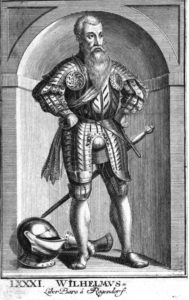
After the Sultan’s army surrounded the imperial city, the defenders attempted to break out. Two days later, Salm broke out again, but fierce Turkish resistance and the personal presence of Grand Vizier Ibrahim forced them to retreat.

The cold weather and the rain made the Turkish army hurry, so on 30 September, Bey Perváné attempted the first attack on the castle, but the defenders repulsed them. On 2 October, the defenders broke through again, but Mehmed, the Bey of Szendrő, drove them back behind the walls. On the 3rd, the Turks tried artillery fire, but the defenders fired back more effectively, inflicting heavy losses on the attackers. The exchange of fire continued in the following days, and the Lagumjis began to dig mines under the walls. To work faster, both the Akindjis and the Spahis were forced to participate in the work.

On 6 October, on their fourth sally, the defenders suffered a heavy defeat, losing around 500 men. At the same time, the rumor was spread, with the intent to deceive, that Ferdinand was in the city and that the defenders were exhausted.


On the 15th they made another dash, with varying degrees of success. Meanwhile, the Turkish army began to load its guns onto ships and withdraw. On the 16th, the whole camp gathered up and headed for home. The defenders continued to fire on them. Many guns and muskets were left in the trenches, which became the spoils of the Viennese.
The Turkish army lost 20,000 men, and most of them died of disease and cold. The losses of the defenders were also enormous. More than 10,000 were killed, about two-thirds of the army. Salm, who was hit in the leg by a cannonball, died of his wound after the siege. But the people of the surrounding area, Lower Austria, Styria, and Bohemia also suffered greatly from the Turkish cavalry on the march.



The invasion and its climactic siege, however, exacted a heavy price from both sides, with tens of thousands of soldiers and civilians dead and thousands more sold into slavery. Some Western historians say that it marked the end of the Ottomans’ expansion towards the center of Europe and arguably the beginning of their long decline as the dominant power of the Renaissance world. “The delivery of Vienna by a brave garrison under Count Niklas Salm in 1529,” suggested historian Rolf Adolf Kahn, “was probably greater though less spectacular achievement than the liberation five generations later brought about primarily by the efforts of a rather large army of combined imperial and Polish forces”.

Finally, Suleiman failed to force Ferdinand to engage him in open battle and was thus unable to enforce his ideological claim to superiority over the Habsburgs. The attack on Vienna led to a rapprochement between Charles V and Pope Clement VII and contributed to the Pope’s coronation of Charles V as Holy Roman Emperor on February 24, 1530. The outcome of the campaign was presented as a success by the Ottomans, who used the opportunity to show off their imperial grandeur by staging elaborate ceremonies for the circumcision of princes Mustafa, Mehmed, and Selim.
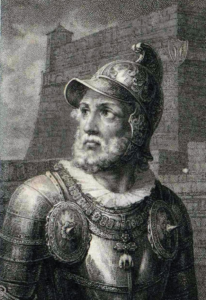
King Ferdinand set up a funeral monument for Niklas Graf Salm — who had been injured during the last Ottoman assault and died on 4 May 1530 — to express his gratitude to the defender of Vienna. This Renaissance sarcophagus is now on display in the baptistry of the Votivkirche in Vienna. Ferdinand’s son, Maximilian II, later built the summer palace of Neugebaeude on the spot where Suleiman is said to have pitched his tent.

On his way home, however, Suleiman handed over the Hungarian Crown he had taken from Perényi Péter to Szapolyai. Suleiman led his next campaign against Vienna in 1532 but was held up for a month at the western Hungarian fort of Kőszeg which was too long time. By then, winter was close and Emperor Charles V, now awakened to Vienna’s vulnerability, assembled 80,000 troops. The Sultan realized that he would have to take Hungary slowly, step by step, to reach Vienna, which was a long way from Turkish territory.
Source: partly from Szibler Gábor

Dear Readers, I can only make this content available through small donations or by selling my books or T-shirts:
Please, support me with a coffee here: https://www.buymeacoffee.com/duhoxoxa
You can check out my books on Amazon or Draft2Digital, they are available in hardcover, paperback, or ebook:
https://www.amazon.com/dp/198020490X or at https://books2read.com/b/boYd81

My work can also be followed and supported on Patreon: Become a Patron!http://Become a Patron!
Become a Patron! and donations can be sent by PayPal, too: https://tinyurl.com/yknsvbk7
 My T-shirts are available: https://hungarianottomanwars.myspreadshop.com/all
My T-shirts are available: https://hungarianottomanwars.myspreadshop.com/all
Subscribe to my newsletter: https://tinyurl.com/4jdjbfkn


